cis-4-Hydroxycyclohexanecarboxylic acid
- CAS NO.:3685-22-1
- Empirical Formula: C7H12O3
- Molecular Weight: 144.17
- MDL number: MFCD04038017
- SAFETY DATA SHEET (SDS)
- Update Date: 2024-07-19 18:29:52
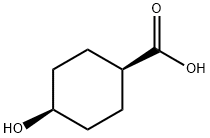
What is cis-4-Hydroxycyclohexanecarboxylic acid?
Chemical properties
White to Almost white powder to crystal. Melting point: 148.0 to 152.0 °C.
The Uses of cis-4-Hydroxycyclohexanecarboxylic acid
Cis-4-Hydroxycyclohexanecarboxylic acid is a metabolite of p-hydroxybenzoic acid. It is the major metabolite in the urine of rats treated with exogenous p-hydroxybenzoic acid. It has been found to have immunosuppressive activities in rat hepatocytes, as well as metabolic disorders that are related to hyperglycemia or diabetes mellitus.
Definition
ChEBI: 4-Hydroxycyclohexylcarboxylic acid is a hydroxy monocarboxylic acid.
Synthesis
cis-4-Hydroxycyclohexanecarboxylic acid can be synthesized through the following steps:
1. In an argon glove box, dissolve ligands L1-(S,R)-f-ambinol (7.5mg, 0.0105mmol) and [Ir(COD)Cl]2 (3.4mg, 0.005mmol) in 1 mL of iPrOH in a 2mL vial and stir at room temperature for 2 h.
2. Put 1 mmol of raw material 4-substituted cyclohexanone into a 4 mL hydrogenation flask.
3. Add 0.1 mL of the in-situ complexed catalyst solution and 1.6 mg of tBuOLi solid powder to the hydrogenation flask.
4. Add 1 mL of EtOH to dissolve the reactants in the hydrogenation flask.
5. Put the reaction flask into the hydrogenation kettle and replace the kettle body with hydrogen three times.
6. Fill the kettle with 5bar H2 and react at room temperature for 12h.
7. After the reaction is completed, carefully release the hydrogen and spin-dry the solvent under reduced pressure.
8. Purify the hydrogenated product cis-4-substituted cyclohexanol by silica gel column.
9. Obtain the final product cis-4-Hydroxycyclohexanecarboxylic acid.
Properties of cis-4-Hydroxycyclohexanecarboxylic acid
| Melting point: | 150°C |
| Boiling point: | 115 °C(Press: 8 Torr) |
| Density | 1.246 |
| storage temp. | 2-8°C |
| solubility | almost transparency in Methanol |
| form | powder to crystal |
| pka | pK1:4.836 (25°C) |
| color | White to Almost white |
| InChI | InChI=1S/C7H12O3/c8-6-3-1-5(2-4-6)7(9)10/h5-6,8H,1-4H2,(H,9,10)/t5-,6+ |
| CAS DataBase Reference | 3685-22-1 |
Safety information for cis-4-Hydroxycyclohexanecarboxylic acid
| Signal word | Warning |
| Pictogram(s) |
 Exclamation Mark Irritant GHS07 |
| GHS Hazard Statements |
H315:Skin corrosion/irritation H319:Serious eye damage/eye irritation |
| Precautionary Statement Codes |
P264:Wash hands thoroughly after handling. P264:Wash skin thouroughly after handling. P280:Wear protective gloves/protective clothing/eye protection/face protection. |
Computed Descriptors for cis-4-Hydroxycyclohexanecarboxylic acid
| InChIKey | HCFRWBBJISAZNK-OLQVQODUSA-N |
| SMILES | [C@@H]1(C(O)=O)CC[C@H](O)CC1 |
New Products
(S)-3-Aminobutanenitrile hydrochloride 4-Methylphenylacetic acid N-Boc-D-alaninol N-BOC-D/L-ALANINOL Tert-butyl bis(2-chloroethyl)carbamate 3-Morpholino-1-(4-nitrophenyl)-5,6-dihydropyridin- 2(1H)-one Furan-2,5-Dicarboxylic Acid Tropic acid 1-Bromo-3,5-Di-Tert-Butylbenzene S-2-CHLORO PROPIONIC ACID ETHYL ISOCYANOACETATE 2-Bromo-1,3-Bis(Dimethylamino)Trimethinium Hexafluorophosphate 4-IODO BENZOIC ACID 3-NITRO-2-METHYL ANILINE 1-(2,4-DICHLOROPHENYL) ETHANAMINE (2-Hydroxyphenyl)acetonitrile 4-Bromopyrazole 2-(Cyanocyclohexyl)acetic acid 4-methoxy-3,5-dinitropyridine 1-(4-(aminomethyl)benzyl)urea hydrochloride 2-aminopropyl benzoate hydrochloride diethyl 2-(2-((tertbutoxycarbonyl)amino) ethyl)malonate tert-butyl 4- (ureidomethyl)benzylcarbamate Ethyl-2-chloro((4-methoxyphenyl)hydrazono)acetateRelated products of tetrahydrofuran
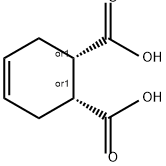


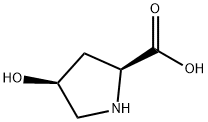
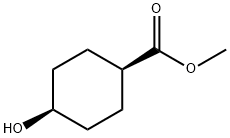

![Bicyclo[1.1.1]pentane-1,3-dicarboxylic acid, MonoMethyl ester](https://img.chemicalbook.in/CAS/GIF/83249-10-9.gif)
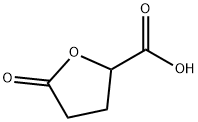
You may like
-
 cis-4-Hydroxycyclohexanecarboxylic Acid CAS 3685-22-1View Details
cis-4-Hydroxycyclohexanecarboxylic Acid CAS 3685-22-1View Details
3685-22-1 -
 Cis-4-hydroxycyclohexanecarboxylic acid 98% CAS 3685-22-1View Details
Cis-4-hydroxycyclohexanecarboxylic acid 98% CAS 3685-22-1View Details
3685-22-1 -
 cis-4-Hydroxycyclohexanecarboxylic acid CAS 3685-22-1View Details
cis-4-Hydroxycyclohexanecarboxylic acid CAS 3685-22-1View Details
3685-22-1 -
 1975-50-4 98%View Details
1975-50-4 98%View Details
1975-50-4 -
 2-HYDROXY BENZYL ALCOHOL 98%View Details
2-HYDROXY BENZYL ALCOHOL 98%View Details
90-01-7 -
 2-Chloro-1,3-Bis(Dimethylamino)Trimethinium Hexafluorophosphate 221615-75-4 98%View Details
2-Chloro-1,3-Bis(Dimethylamino)Trimethinium Hexafluorophosphate 221615-75-4 98%View Details
221615-75-4 -
 14714-50-2 (2-Hydroxyphenyl)acetonitrile 98+View Details
14714-50-2 (2-Hydroxyphenyl)acetonitrile 98+View Details
14714-50-2 -
 118753-70-1 98+View Details
118753-70-1 98+View Details
118753-70-1